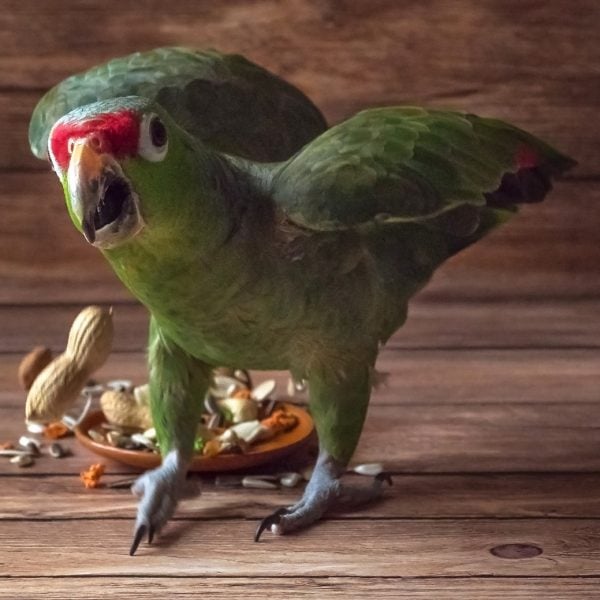
How Defense Wins Football Games and Saves Parrots
Last Updated on by Mitch Rezman
Remember the letters E-B-F. All your birds emotions are built upon 3 activities.
Eating – Breeding – Fleeing
Breeding is a small part of a birds life. Most of it’s day is based on the 40/60 rule of Psittacine Survival for indigenous parrots of the forests & deserts. They spend 40% of their time seeking food (why foraging is so important) and 60% of their time trying not to be food. Parrots deal with threats by flying away so they never really feel scared until they’re unable to escape a pending menace.
Defense wins football games – I learned that years ago here in Chicago when we had a real football team with real coaches, quarterbacks and defensive greats like Mike Singletary, Dan Hampton and Brian Urlacher (of late) – sigh. It’s that very same focus on defense that keeps parrots alive in the uninhabited rain forest. When a parrot senses danger in the wild they fly first & question things later.
Parrots and humans share many of the same emotions. Threat and concern although similar are quite different. We can feel “threatened” while in an airliner flying through a storm. But we know pilots have extensive training, aircraft are inspected and expected to easily endure a little turbulence so we’re not too “concerned”.
A parrot whose wings have been clipped no longer has the ability to select fight or flight. Many times this translates into flight or bite. In other words, unable to escape the aforementioned pending thread, the biting of the human could be in someone’s immediate future – on a regular basis.
This modifies their definition of defense “replacing flight with bite”. Because they can no longer escape they instinctively lash out with their beak and worry about things later. This can and does lead to unpredictability in the animal which can restrict their overall development.
Learning this is important for younger birds and giving them time to develop mental defense mechanisms that nature intended them to have builds confidence. It’s not like a baby bird says “Hey mom and dad how about some flying lessons”? They learn the old-fashioned way, by jumping or getting pushed out of the tree. It doesn’t always go well. They fly into trees and get stuck in bushes.
I’ve talked about giving Popcorn flying lessons when we just got her. Have you ever wondered, who teaches undomesticated baby birds to fly? Ironically if anyone remembers the saga, we rescued Popcorn from a very thick bush in the neighborhood she had become entangled in having escaped from her previous owner (never found).
A young bird that learns how to control its own flight learns how to avoid flying into walls and fixtures around the house. By developing flight skills they are more poised & self reliant birds that will find it easier to socialize with the human flock.
Thus when clipping your bird’s wings you are not only limiting their ability to fly but you’re changing their entire decision-making process.
written by mitch rezman
approved by catherine tobsing
Author Profile
Latest entries
 The Traveling BirdJune 26, 2025Can You Name 5 Parrot Species That Are Living Wild in the USA?
The Traveling BirdJune 26, 2025Can You Name 5 Parrot Species That Are Living Wild in the USA? Bird BehaviorJune 26, 2025How is it Parrots Are Problem Solvers Social Animals and Even Use Tools?
Bird BehaviorJune 26, 2025How is it Parrots Are Problem Solvers Social Animals and Even Use Tools? Bird & Parrot AnatomyJune 25, 2025How a Tiny Chemical Modification Makes Parrots Nature’s Living Paintings
Bird & Parrot AnatomyJune 25, 2025How a Tiny Chemical Modification Makes Parrots Nature’s Living Paintings PigeonsJune 20, 2025How Do Parrots Thrive in Cities Outside Their Native Habitats?
PigeonsJune 20, 2025How Do Parrots Thrive in Cities Outside Their Native Habitats?


